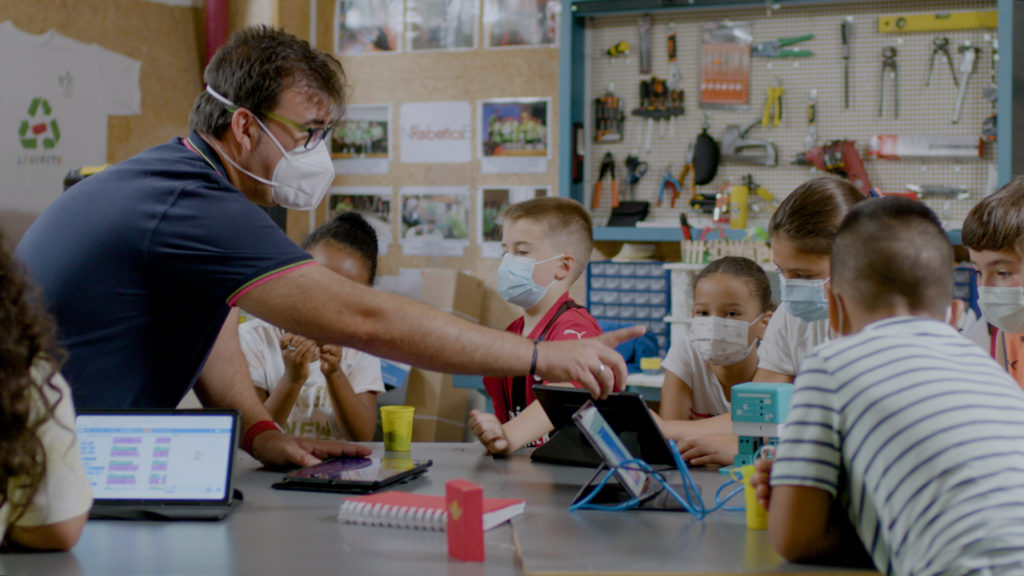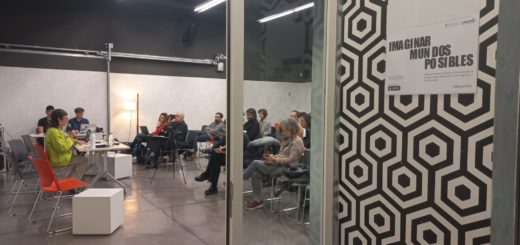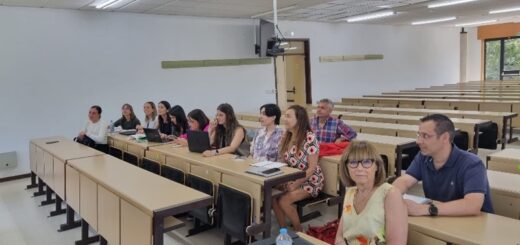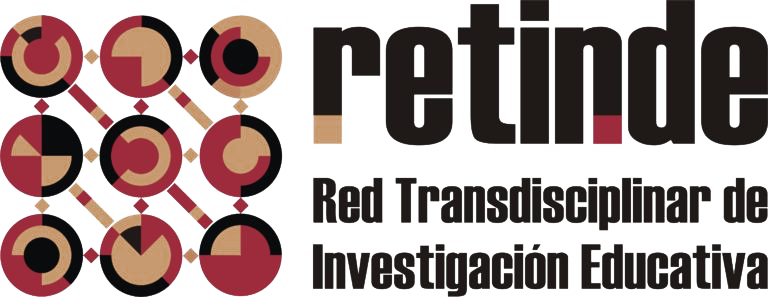Using games to train children’s digital competence: the Digicraft program
The purpose of this novel educational program is to bridge the digital divide and awaken technological vocations through the implementation of a methodology that combines the digital world and the world of crafts to prepare activities and training paths tailored to different ages. In short, a training proposal aimed at awakening children’s interest in digital technology in a natural and enjoyable way.
Its didactic design follows the European Digital Competence Framework for Citizens (DigComp 2.1.), which groups competences into five areas (information and data literacy; communication and collaboration; digital content creation; safety; problem solving), four levels with two sublevels each (foundation, intermediate, advanced, highly specialized) and three fields (knowledge, skill and attitude). This framework was used to set the goals for the two age groups (ages 6-8 and 9-12) established in the program.

Digital competence, which plays a key role in safely and critically using digital technology, encompasses the fields of knowledge, skill and attitude that are required for citizens to be able to function in a rapidly developing digital society. Along the same line, DigiCraft seeks to train children between the ages of 6 and 12 in the digital competences required to face their future and adapt to a constantly changing society, bearing in mind that these competences go beyond being able to use the latest digital gadget or the most up-to-date technologies. It is a program in which families and the educational environment play an essential role, acting as guides, facilitators and companions in the learning and development of children’s digital capacities, both at home and in the classroom.
One of the main axes of the program is the methodology that governs it, which is based on experimentation and multisensory learning using games. It is underpinned by four fundamental pillars: games as a motivating element, experience to learn by creating, combining the physical and the virtual world, and adapting digital competence to each age. It is invariably aimed at seeking students’ participation, encouraging their curiosity and promoting their creativity. The most commonly used teaching tools are board games, group dynamics, low-cost experiments using recycling or printable material, craftwork, etc. Thus, it contributes to the development of children’s digital competence while at the same time involving other instrumental competences that are necessary to become proactive citizens in today’s knowledge society, such as the development of motor skills, logical thinking and teamwork.
The teaching model that supports the DigiCraft program is based on learning by doing, discovering and creating new things using experience and exploration, generating safe trial-error environments that favor learning. On the other hand, it should be noted that games are not only used as a teaching strategy to motivate but also as facilitators in the development of social skills, improving concentration, complex thinking and strategic planning, showing that all of it enhances motivation towards learning, helping to interiorize multidisciplinary knowledge, fostering logical and critical thinking, and improving problem solving and decision-making skills.
The program is organized into different training pathways that strengthen respect for the environment, encourage recycling and promote the responsible use of technology. It is currently being expanded to other countries that are adapting it to their various contexts and educational realities.
The material resources used to develop the methodology are high quality and low cost, which makes them affordable for all kinds of target users, regardless of their purchasing power. This is an essential requirement that guarantees the success of the program, since vulnerable children are one of its target population groups, where users, in many cases, lack access to digital devices such as computers or tablets, and might not have unlimited Internet access.
The program is not based on a single technology but seeks to use various emerging technologies that act as a vehicle for learning, capitalizing on their potential to attract children’s attention and ensure their motivation. Current work involves augmented reality, videogames, educational robotics, artificial intelligence, the Internet of things and audiovisual technologies, all of which will predictably have a significant impact in the coming years, both in Primary Education and in Compulsory Secondary Education. The choice of the most appropriate technologies is based on a thorough theoretical study where the strengths and weaknesses of each of them were assessed to decide whether they should be involved in the program or not.
The DigiCraft program comes in three formats: DigiCraft at your school, DigiCraft Vulnerable Children and DigiCraft anywhere. Based on experience with the training proposal in any of its formats, the following achievements can be highlighted: it develops digital competence in a creative way, it fosters emotional education, it is based on basic but flexible principles that allow it to be adapted to different learning environments and also to different educational contexts (formal and non-formal), and the child is the main target of the teaching-learning process.
In conclusion, the innovative proposal offered by DigiCraft contributes, including social perspective, to the acquisition and development of digital competence. It promotes people’s e-inclusion in digital citizenship processes using training and educational intervention to achieve the goal of improving society. The program will eventually have a larger economic and social impact, contributing to greater equality of opportunities among citizens and to sustainable and more equitable development.
Reference
Casillas-Martín, S., Cabezas-González, M., & García-Valcárcel Muñoz-Repiso, A. (2020). DigiCraft: a pedagogical innovative proposal for the development of the digital competence in vulnerable children. Sustainability, 12(23), 9865, DOI: https://doi.org/10.3390/su12239865 ISSN: 2071-1050.

Autoría
Sonia Casillas Martín* (scasillasma@usal.es)
Marcos Cabezas González* (mcabezasgo@usal.es)
Ana García-Valcárcel Muñoz-Repiso* (anagv@usal.es)
* Members of the GITE-USAL research group. University of Salamanca. Spain
Financiación
Funding: “DigiCraft: Education in competences and digital abilities”. Financed by the Foundation Vodafone Spain. Project under the law article 83 of the Organic Law of Universities.






